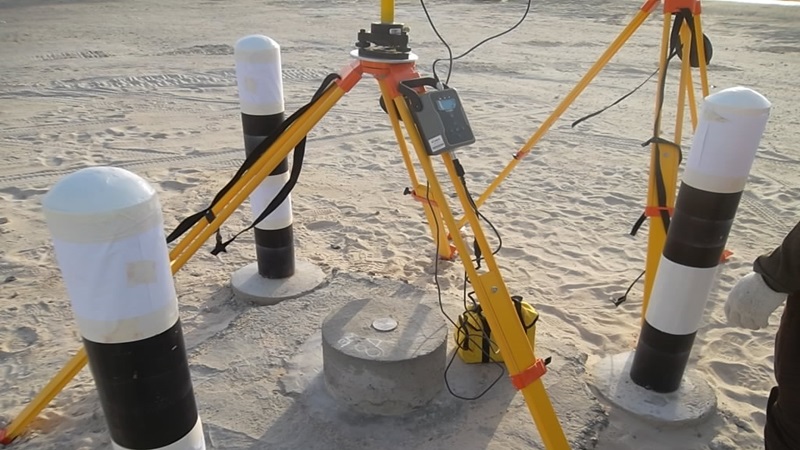Geodetic Survey
Geodetic Survey entails locating and relating the position of objects on the earth relative to each other while taking into account the size, shape, and gravity of the earth. This type of survey is suited for large areas and long lines and is used to find the precise location of basic points needed for establishing control for other surveys.
Horizontal and vertical networks that span the country form the primary spatial reference system used in mapping, boundary demarcation, and other geomatics applications. Practical applications of geodesy include monitoring earth movement and determining the precise location of points on the surface of the earth, for use in satellite tracking and global navigation.
Control Surveys encompass the positioning of survey ground points by using GPS or GNSS as per the specifications for intended uses. The extension of GPS/GNSS geodetic control networks to remote areas and the establishment of Survey Control Networks for offshore and underground surveys among others.
Survey control networks are the fundamental foundation to support any project from building construction, and deformation monitoring, to the national survey network for legal boundaries, geographical information, and mapping. For the establishment of horizontal controls used traversing method and vertical controls used the leveling method.
Traversing Survey Method
Traversing is a type of survey in which a number of connected survey lines form the framework and the directions and lengths of the survey lines are measured with the help of an angle measuring instrument and tape or chain respectively. There are two types of traverse surveying i.e. Closed Traverse and Open Traverse.
The closed traverse is suitable for locating the boundaries of construction projects, industrial projects, chemical plants, buildings, etc., and for a survey of large areas. The open traverse is suitable for surveying a long narrow strip of land as required for pipeline projects, railroad projects, and road, and highway construction.


Leveling Survey Method
Leveling is the process of determining the height of one level relative to another. It is used in surveying to establish the elevation of a point relative to a datum or to establish a point at a given elevation relative to a datum. The basic concept of leveling involves the measurement of vertical distance relative to a horizontal line of sight. Hence it requires a graduated staff for the vertical measurements and an instrument that provides a horizontal line of sight.
There are two accepted methods of booking observations – The rise and Fall method and the Height of the Plane of Collimation method (HPC/HOC). Neither method can be said to be more accurate than the other. Rise and fall do have an additional check on the arithmetical reduction of the observations, which makes it more popular online leveling. The HPC method is used for setting out because one always needs to know the height of the instrument.

